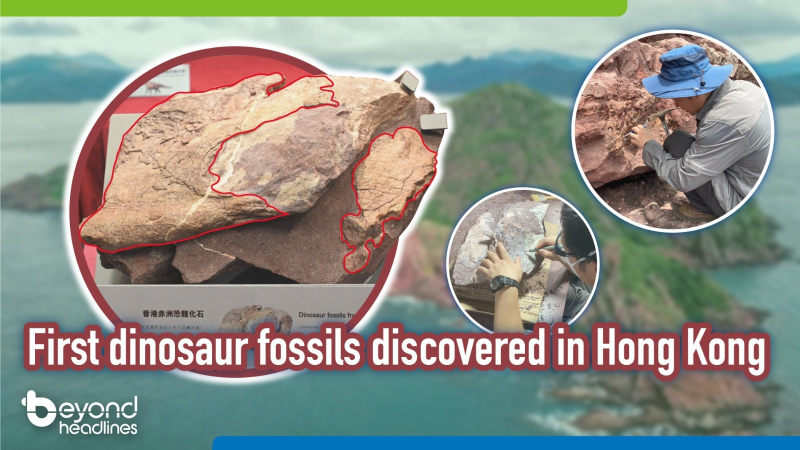Dinosaur fossils, dating back to the Cretaceous period from 145 to 66 million years ago, have been discovered for the first time in the Hong Kong UNESCO Global Geopark in the northeastern waters of Hong Kong. Found on Port Island, an area characterized by its sedimentary rocks and limestone, the dinosaur is believed to be buried under sand and gravel after its death, later washed out by floods, and then re-buried in the location where it was found.
This discovery is significant as it adds new evidence for research into palaeoecology in Hong Kong. The dinosaur fossils are currently on display at the Hong Kong Heritage Discovery Centre (HDC), situated in Kowloon Park.
One visitor, Mr. Zhou, expressed his excitement about the discovery, stating that he was surprised to find dinosaur fossils in such a small place like Hong Kong. He believed that dinosaurs may have once roamed the area. He also found the lecture provided by experts very insightful and useful in enriching his understanding of dinosaurs.
The Heritage Conservation Commissioner plans to explore the concept of "dinosaur tourism" in collaboration with the Tourism Commission. This initiative aims to attract more tourists and raise public awareness of Hong Kong's geological heritage and islands. The nearby Grass Island at Port Island has already become a popular tourist destination. If there are more archaeological discoveries, Port Island could evolve into an open museum, collaborating with neighboring islands to develop more island-hopping, water tourism, and educational tourism products.











![[Hong Kong Food Adventure] Clay Pot Rice Magic in Sai Wan](https://img.beyondheadlines.hk/articles/cover/20250417/0287b777f7d43cd6c44f6048d95998af.jpg!w800)

